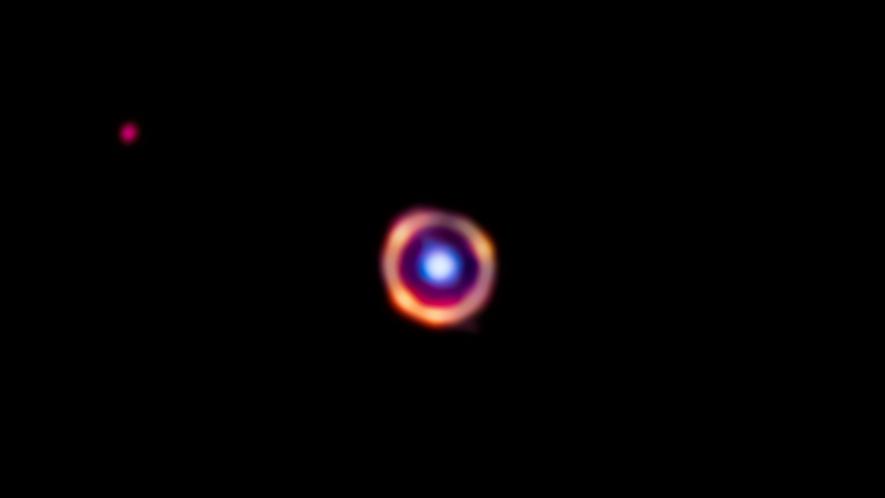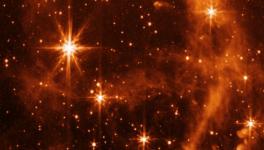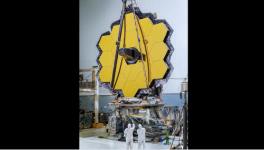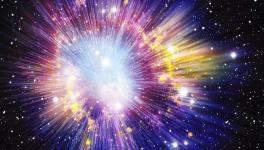Carbon Molecules Present in Galaxy 2.3 Billion Light Years Away

The presence of such molecules offers valuable information about the distant galaxy and what happened a few billion years after the Big Bang. | Image courtesy: @NASAWebb (Twitter)
Watching and studying cosmic bodies far from the Earth has excited astronomers for ages. But how can they detect molecules in a galaxy billions of light years away? One light year is the distance light travels in a year.
The James Webb Space Telescope (JWST) has made it possible with scientists detecting complex carbon molecules drifting through a galaxy far from Earth for the first time.
The presence of such molecules offers valuable information about the distant galaxy and what happened a few billion years after the Big Bang. This discovery was published in Nature on June 5.
The molecules, resembling those present in smoke and soot, are called polycyclic aromatic hydrocarbons and also found in oil and coal deposits and smog. The galaxy, SPT0418-47, is 12.3 billion light years from the Earth.
These hydrocarbons are also found near young stars, which emit huge amounts of ultraviolet light. The molecules grow large and eventually appear as smoke or soot floating in space.
“The molecules we found aren’t simple things like water or carbon dioxide. We’re talking about big, floppy molecules with dozens or hundreds of atoms,” Justin Spilker, the lead author of the Nature paper and an astronomer at Texas University, said in a statement to space.com.
The hydrocarbons help regulate the cooling and heating of the gas within galaxies and play a role in controlling how new stars are born, according to Stacey Alberts, an astronomer at the University of Arizona, Tucson, as reported in an article about the discovery by Alexandra Witze and published in Nature.
In earlier studies on the same galaxy, scientists detected areas where star formation might have occurred. But spotting the hydrocarbons was impossible as they could be detected only with infrared light used by the JWST.
Spilker’s team turned the JWST to the galaxy last August and obtained the data months later. The molecules appeared as bright patches inside the galaxy’s ring, suggesting it made stars early in the universe’s history—probably when it was just 10% of its current age. The present age of the universe is 13.8 billion years.
According to experts, detecting the molecules is valuable information about how dust formed and how it was related to the formation of stars during the universe’s early period.
The detection was made possible with JWST’s power and the ‘Gravitational Lensing’ phenomenon. The phenomenon, first predicted by Albert Einstein in his Theory of Relativity, occurs when two galaxies are nearly perfectly aligned from the point of view of an observer on the Earth. The light from the galaxy in the background is stretched and magnified by the galaxy in the foreground and a ring-like shape forms, known as the Einstein ring.
In the case of SPT0418-47, the intervening galaxy (or the galaxy at the foreground in the gravitational lensing) bends and distorts light from SPT0418-47, making it many times brighter.
Get the latest reports & analysis with people's perspective on Protests, movements & deep analytical videos, discussions of the current affairs in your Telegram app. Subscribe to NewsClick's Telegram channel & get Real-Time updates on stories, as they get published on our website.


















